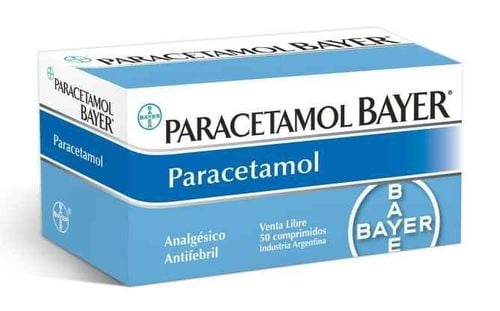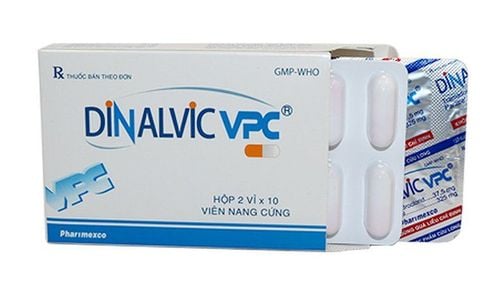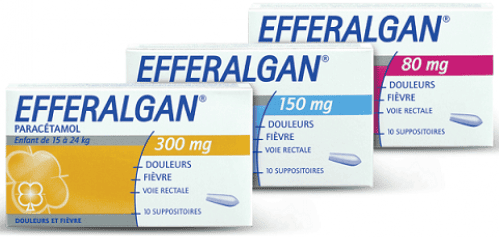This is an automatically translated article.
Godpadol is commonly prescribed for moderate to severe pain. Learn some information about uses, doses and precautions when using Godpadol to help patients use the drug safely and effectively.1. What is Godpadol?
Pharmaceutical name: Godpadol drug. Group of drugs: belongs to the group of non-steroidal anti-inflammatory drugs, analgesics and antipyretics, treatment of gout and diseases of bones and joints. Ingredients: Contains Paracetamol 325mg and Tramadol HCl 37.5mg. Preparation: Film-coated tablets. Registration number: VD-22407-15. Manufacturing enterprise: Dong Nai Pharmaceutical Joint Stock Company - Vietnam. Registered enterprise: Dong Nai Pharmaceutical Joint Stock Company - Vietnam.
2. Uses of Godpadol
Tramadol is known to be a central analgesic, acting by at least 2 mechanisms. These include binding of the parent and active metabolite (M1) to the Mu-opioid receptor, and mild inhibition of serotonin and norepinephrine reuptake.
Paracetamol is another central pain reliever, but the exact mechanism and site of action to relieve pain have not been clearly defined so far.
When evaluated in laboratory animals, the combination of Paracetamol and Tramadol has shown a synergistic effect. Because of that, Godpadol is indicated in the treatment and relief of moderate to severe pain.
3. Dosage and how to use Godpadol
3.1. Dosage of Godpadol For children over 12 years old and adults: Use with a maximum dose of 1-2 tablets every 4-6 hours and do not take more than 8 tablets in a day. Children under 12 years of age: Safety and effectiveness have not been studied in children. For the elderly over 65 years of age: There were not any differences in safety or pharmacokinetic properties between elderly users over 65 years of age and younger users. 3.2. How to take Godpadol The administration of the drug with food does not present any change in the peak plasma concentration or absorption of Paracetamol or Tramadol. Therefore, users can use the drug without having to depend on meals.
3.3. In case of taking an overdose of Godpadol, the patient is at risk of experiencing symptoms and signs of poisoning Tramadol, Paracetamol or both.
Tramadol: Consequences of using Tramadol Overdose can lead to respiratory failure, convulsions, coma, cardiac arrest, and even death. Paracetamol: Used in high doses there is a risk of liver toxicity in many patients. Manifestations may occur after liver damage due to Paracetamol overdose such as: Anorexia, nausea, vomiting, gastrointestinal irritation, discomfort, paleness, sweating. In addition, symptoms of hepatotoxicity may also appear 48-72 hours after taking the drug.
4. Notes when using Godpadol
4.1. Contraindications to the drug Godpadol Do not use Godpadol medicine for women who are breastfeeding, because the safety of breastfed babies has not been studied. In addition, do not use the drug with any patient with a history of hypersensitivity or allergy to Paracetamol, Tramadol or any of the active ingredients, excipients in the drug.
4.2. Godpadol drug side effects The most common side effects when using the drug are in the digestive system and central nervous system such as: Nausea, vomiting, dizziness, drowsiness.
Some of the following side effects also occur, but will be less common, which are:
Whole body: Fatigue, body weakness, strong emotions. Central and Peripheral Nervous System: Feeling shivering, headache. Digestive system: Causes abdominal pain, flatulence, dry mouth, vomiting, constipation, indigestion, diarrhea. Psychiatric disorders: Anorexia, insomnia, restlessness, anxiety, confusion, excitability. Skin or skin dependent components: Itching sensation, increased sweating, rash. Some rare clinically detected side effects that may be related to the use of the drug include:
Whole body: Chest pain, syncope, chills, withdrawal syndrome. Cardiovascular disorders: Causes hypertension or severe hypertension, hypotension. Central and Peripheral Nervous System: Causes convulsions, loss of balance, muscle tension, involuntary muscle contractions, stupor, dizziness, paresthesia, migraine or severe migraine. Digestive system: Tongue edema, difficulty swallowing, black stools due to gastrointestinal bleeding. Ear and vestibular disorders: Tinnitus, difficulty hearing. Cardiac arrhythmias: Heart palpitations, palpitations, arrhythmias. Liver and biliary organs: Causes abnormal liver test results. Metabolism and nutrition disorders: Weight loss. Psychiatric Disorders: Loss of consciousness, forgetfulness, confusion, mood swings, hallucinations, depression, nightmares, strange ideas, drug abuse. Red blood cell disorders: Anemia. Urinary system: Causing urinary disorders, urinary retention, little urine. Respiratory system: Causes difficulty breathing. Visual disturbances: Reduced vision, abnormal vision. Some other side effects of the drug before the trial phase and after being marketed include:
Allergic reactions (including anaphylaxis, urticaria, Stevens-Johnson syndrome); orthostatic hypertension; cognitive dysfunction; hepatitis and wanted to commit suicide. Laboratory-reported abnormalities result in elevated creatinine. Serotonin syndrome (symptoms may include fever, tremors, irritability, nervous tension) often occurs when Tramadol is used in combination with substances that affect serotonin such as MAO inhibitors, selective inhibitors serotonin reuptake filter. Post-marketing surveillance of Tramadol has shown that it very rarely changes the effects of Warfarin, including increased clotting time. 4.3. Drug Interactions Concomitant use with serotonin reuptake inhibitors and MAO inhibitors: May increase the risk of side effects, including serotonin syndrome and seizures. Concomitant use with Carbamazepine: There is a risk of a significant increase in the metabolism of Tramadol. On the other hand, the analgesic effect of Tramadol in the drug may also be reduced in patients taking Carbamazepine. Concomitant use with Quinidine: Tramadol is converted to M1 (the active metabolite) by CYP2D6, so co-administration with Quinidine will increase the concentration of Tramadol. Clinical trial results of this interaction have not been definitive. Concomitant use with Warfarin drugs: As a medical rule, patients should be periodically assessed for extraneous clotting time before co-administration with these drugs due to some cases of INR (INR) reported. international normalized ratio (international normalized ratio) is increased in some patients. Co-administration with CYP2D6 Inhibitors: Results from in vitro microsomal drug interaction studies in the human liver indicate that co-administration of CYP2D6 inhibitors such as paroxetine, fluoxetine or amitriptyline is possible. inhibit the metabolism of Tramadol. 4.4. Precautions when using Godpadol Special care should be taken when using the drug, because there may be a risk of convulsions when used in combination with TCAs (tricyclic compounds), Opioids, SSRIs (regeneration inhibitors). serotonin uptake), MAOIs, sedatives or drugs that lower the seizure threshold; in patients with a history of seizures, in patients with epilepsy or at risk of seizures. Particular caution should be exercised when using the drug because it can cause respiratory depression in patients at risk of respiratory failure who take high doses of Tramadol with alcohol, anesthetics or local anesthetics. Special care should be taken when using the drug concurrently with drugs that depress the central nervous system such as tranquilizers, hypnotics, anesthetics, alcohol, anesthetics, Opioids. Caution should be exercised when administering the drug to patients who are addicted to opiates, because it can cause relapse. Care should be taken when used in patients with chronic alcoholism, because the risk of hepatotoxicity is quite high. The use of Naloxone to treat an overdose of Tramadol may increase the risk of convulsions. For patients with creatinine clearance less than 30 ml/min, it is recommended to use the drug at a dose of no more than 2 tablets every 12 hours. Particular caution should be exercised in patients with severe hepatic impairment and should not be taken with other medicinal products containing Paracetamol or Tramadol. Do not exceed the prescribed dose. Above is the content of the uses, ingredients, dosage and usage of Godpadol. Note, Godpadol is a prescription drug, so patients should not use it on their own, but need to contact a specialist directly for a suitable prescription to ensure safety for health.













